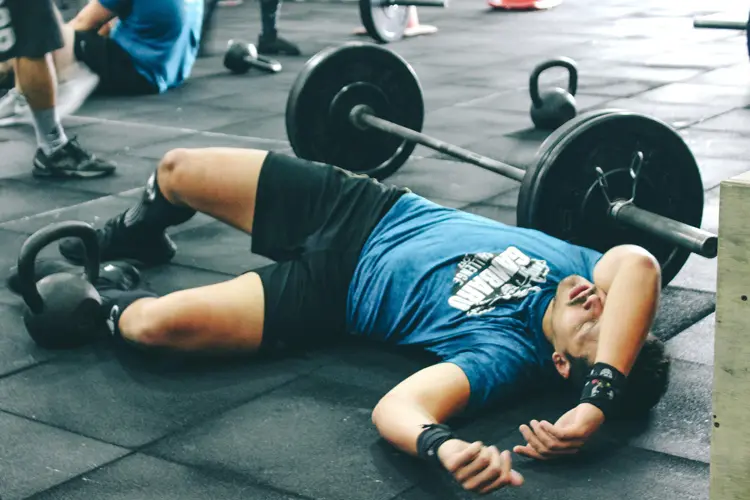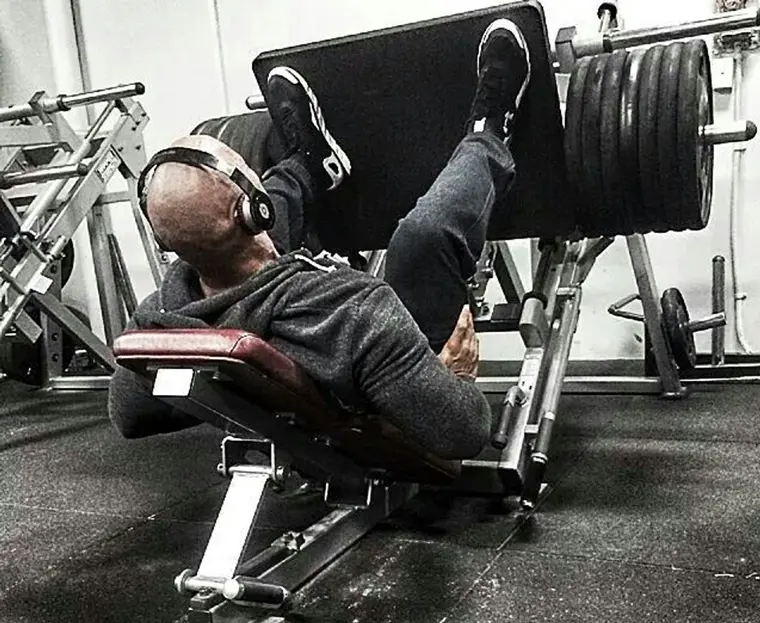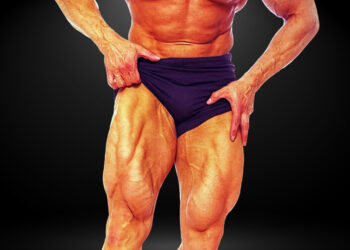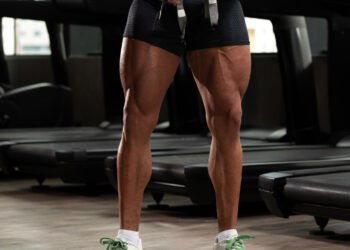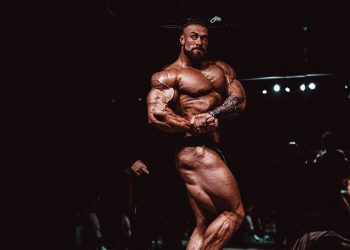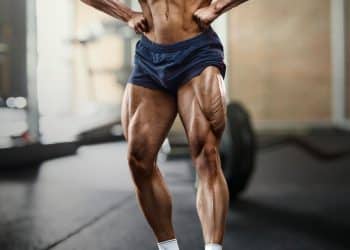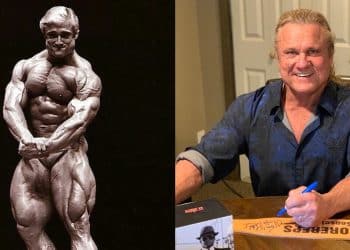Leg training is challenging enough but mix in the fact that you’re forty-plus and possibly have some strained joints and it’s not hard to look at packing on more muscle as an uphill climb. Compound that challenge with the plethora of information specifically aimed at the young “gym bros,” and it’s easy to find yourself out of ideas.
Sure, you can find plenty of info about rehabbing bad knees or hips, but what about us who want muscular legs along with more mass?
Here I want to break down your current situation and then explore the possibilities of growing more muscle on your lower half.
Some changes are in order
What’s different about training after forty? Well, my prediction is that your knees are tired, your spine just isn’t built for squat maxes anymore, and your capacity and interest for heavy lifting has fizzled.
Most of us would simply delete. We reduce exercises, intensity, loads, and we relegate ourselves to accepting our new, cruddy little lower body workouts.
Yes, things are different, things hurt, and we have lost some of our motivation to sit down and dissect our training to move forward.
Level Up Your Fitness: Join our 💪 strong community in Fitness Volt Newsletter. Get daily inspiration, expert-backed workouts, nutrition tips, the latest in strength sports, and the support you need to reach your goals. Subscribe for free!
But, what do you really want?
You want more muscle
Lean, muscular legs will do just fine. But that takes training for muscle hypertrophy. It still requires a degree of intensity and a fair share of specific exercises to target those trouble areas.
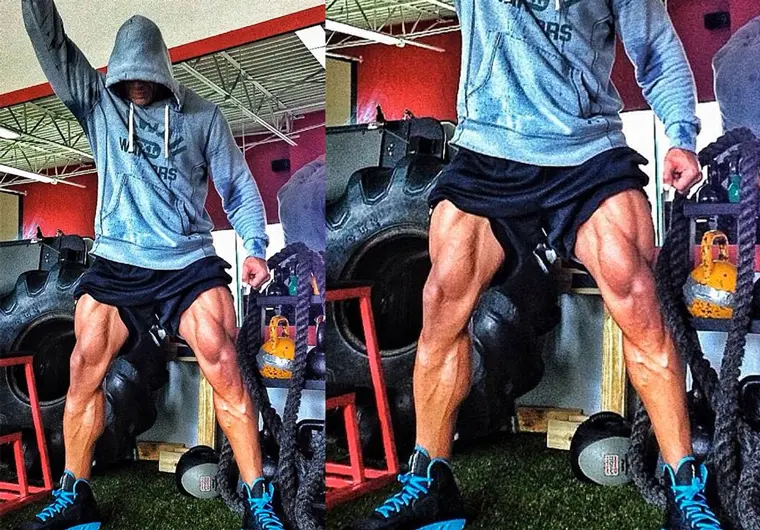
In other words, we can’t just throw together a program of squats, leg presses, and leg extensions and call it a day. We need to address the issues that are holding you back – preventing you from getting to the next level of development.
And news flash; it is possible for the over forty crowd. I’m 46 and I’m still getting after it.
Do you need more recovery?
One of the biggest topics I come across almost daily when it comes to training after forty is recovery. It has been almost accepted as doctrine that we need more recovery. More time between workouts, sets, and just plain more rest to recover properly if we want even the slightest sliver of results.
I believe this… a little. Yes, things are different. Yes, we need to keep a close eye on sleep, nutrition, and stress levels, but shouldn’t everyone regardless of age?
Instead of focusing on the things we can’t fix such as age and “mileage” on our joints over the years, I like to focus on those important factors we have influence over.
Can we sleep better and with more regularity? Can we eat better? Can we at least start to regulate stress levels so we may recover more effectively? Of course we can. By addressing these tangible issues, we can increase our recovery abilities significantly and finally make some gains in the leg department.
Realistic goals
For you to confidently wear shorts to the pool or beach you’ll need some realistic goals to start. No, you won’t gain two inches on your legs overnight wrought with striations and muscularity ready for the stage, but you can at least begin down a better road of training them.
Let’s break down some principles, look at a sample workout, and then take a quick look ahead.
How to adapt (principles)
There’s no question things must change. We’re not twenty anymore. We can’t just throw together a basic program and willy-nilly it in the gym. We need a bit more self-care if we want to continue to make progress. Here are a few of the more common issues needing addressed.
Back issues
Herniated, slipped, or compressed discs? Heavy squats are most likely out of the question. As we age it isn’t our muscle tissue that has changed per se, but more about how beat up our joints and spine are. We need to utilize more unilateral (single limb) movements to lighten the load on our spine while still properly overloading our legs. Bonus: you’ll find out which leg is weaker very quickly.
Knee issues
Deep knee bends (during squats and leg presses) are probably out as well. Structurally speaking, our knees are quite susceptible to strain and injury. We’ll also need to adjust alignment by making sure your knees track with where your feet are pointing. Any slight deviation laterally and the knees are stressed for potential injury.
Intensity and heavy loads
Intensity has long been related to load. In performance circles, intensity is normally a percentage of your one-rep max effort for a specific exercise. So, when high intensity is uttered, high loads are perceived. Let’s break free from this belief and redefine intensity as simply the effort put into a workout despite the level of load. In other words, let’s lighten our loads, but still apply a high degree of intensity.
Sample workout
Below is a sample leg workout with alternatives that address many of the issues listed above while packing on more quality muscle. It will look a bit simple, but that doesn’t mean it’s easy. Just trust that it’s designed to stimulate muscle growth while giving your joints a break.
Seated calf raise: 3 x 10-20
Standing calf raise: 3 x 10-20 (alternative: single-leg calf raise with dumbbell)
Lying leg curl: 3 x 10-15 (alternative: seated leg curl)
Bulgarian split squat with dumbbells: 3 x 10-15 each leg
Leg press: 2-3 x 20 (alternative: single leg press)
Walking lunge: 2 rounds with bodyweight
Notes
Seated calf raise: Perform each rep slowly and under control. Avoid bouncing at the bottom. Simply stop for a moment and then flex hard at the top for a full contraction.
Standing calf raise: Same as above but keep your knees relatively straight and avoid involving your upper legs to help push the weight up. Slow and controlled reps here as well.
Lying leg curl: Try keeping your hips on the pad at all times and try not to explode the weight up causing momentum.
Rear foot elevated Bulgarian split squat: Bring your forward foot out so that your knee is 90 degrees at the bottom of the movement. Also, keep your knee directly in line with your feet.
Leg press: If you have knee issues, it’s fine to descend to a 90-degree bend at the knee. Just make sure your hips and butt stay firmly in the seat (avoid your hips from rising) and keep your knee in line with your feet.
Walking lunge: Go as deep as your knees will comfortably allow. The key here is to keep constant tension on your lower half for a severe burn.
…And beyond
Try the above workout for at least four weeks. If you feel a plateau coming on after that or just want something a little different, don’t be afraid to mix it up a bit. Maybe try supersetting certain exercises together or perform the entire workout in reverse order.
The key is to address your weak areas and/or sensitive areas and keep making progress. Forty isn’t some sort of “beginning of the end” era. It’s only the start of a new way of training.

